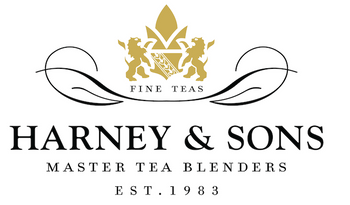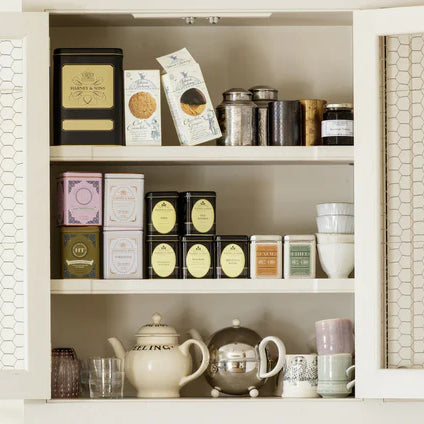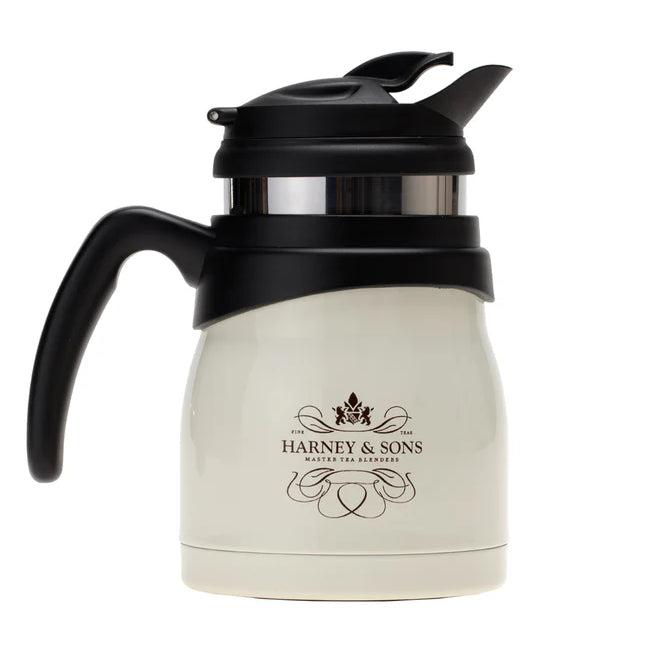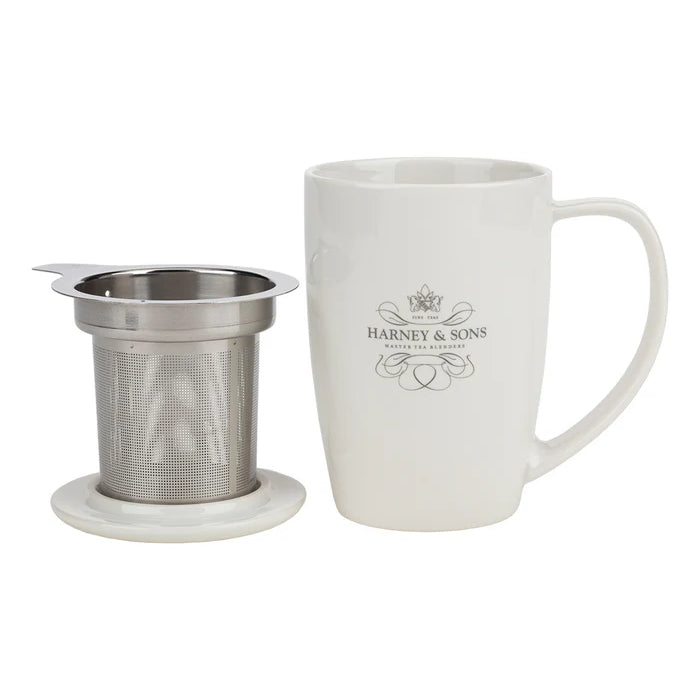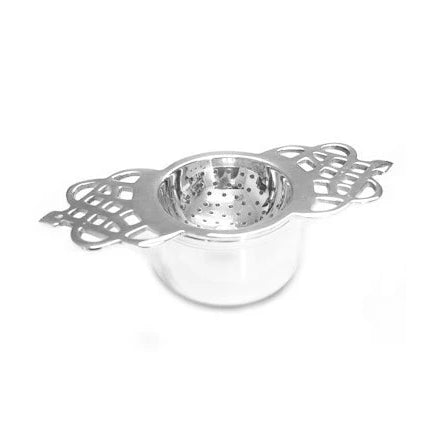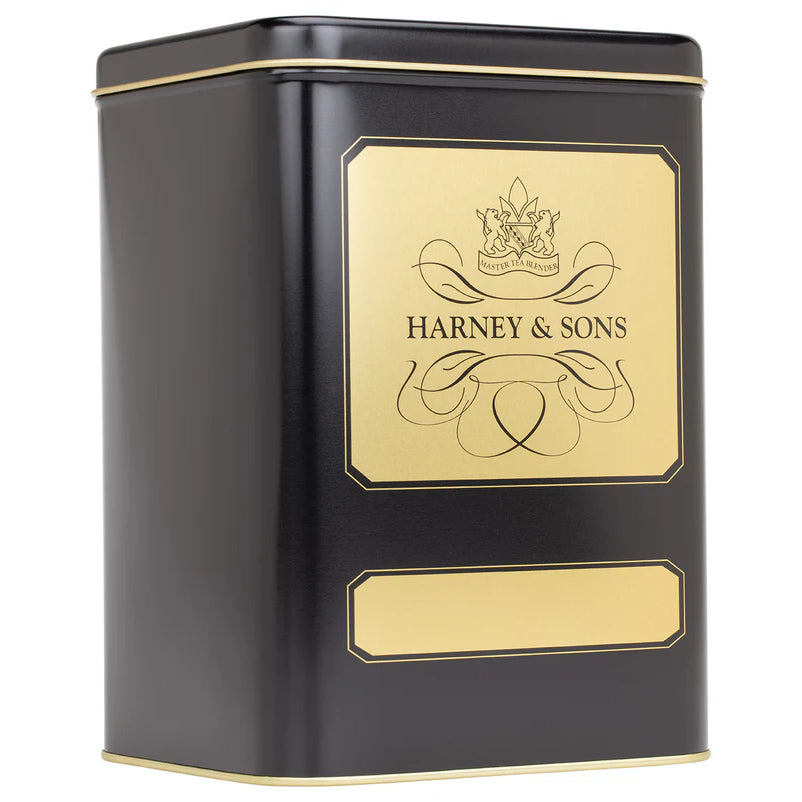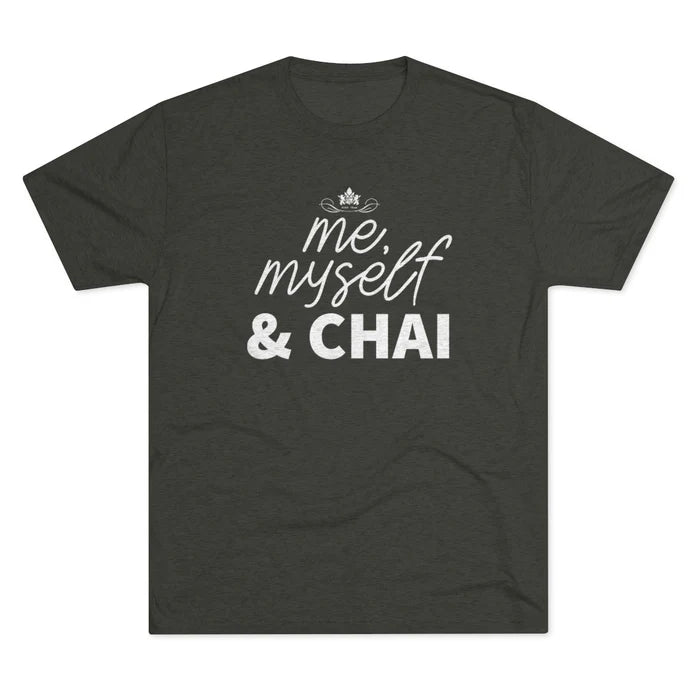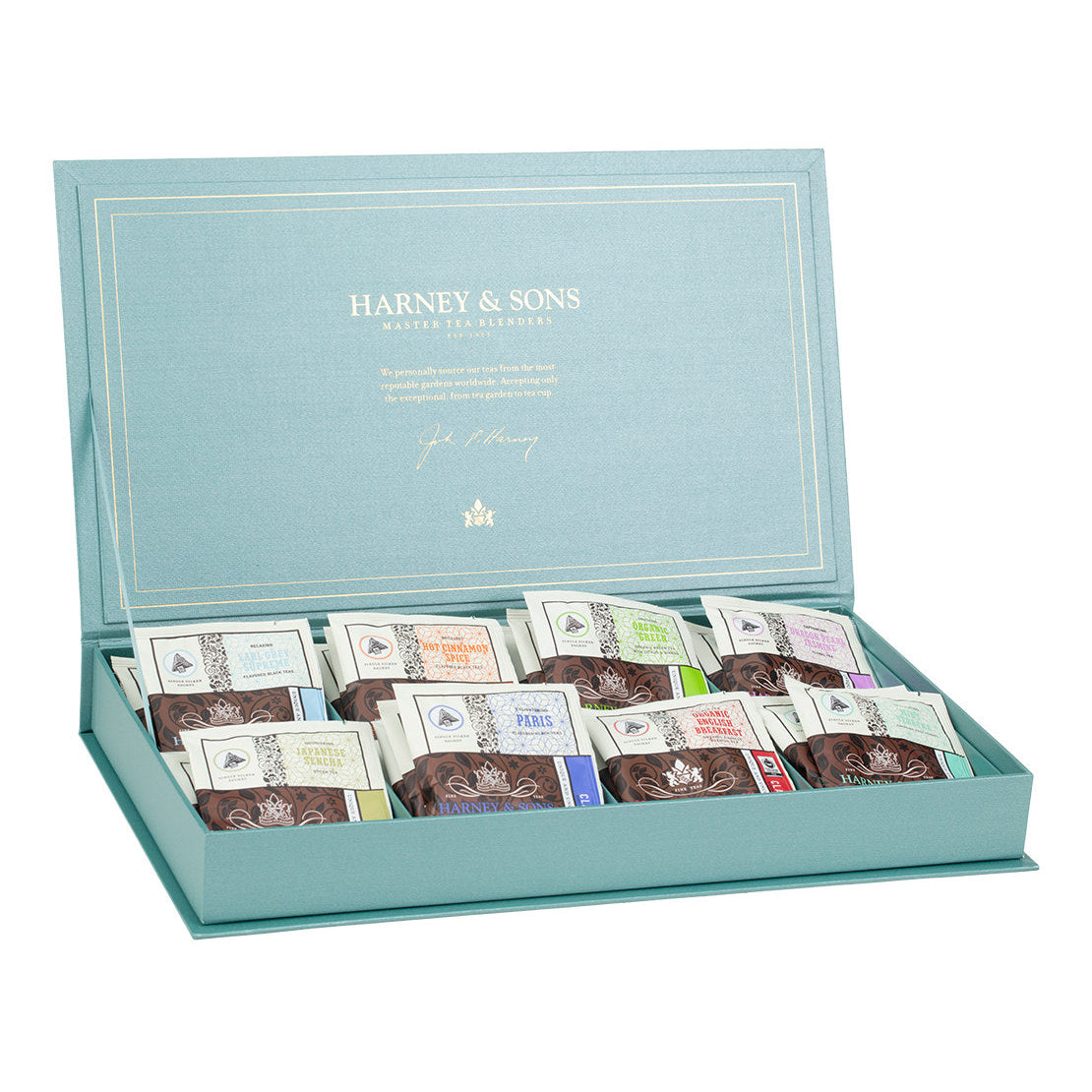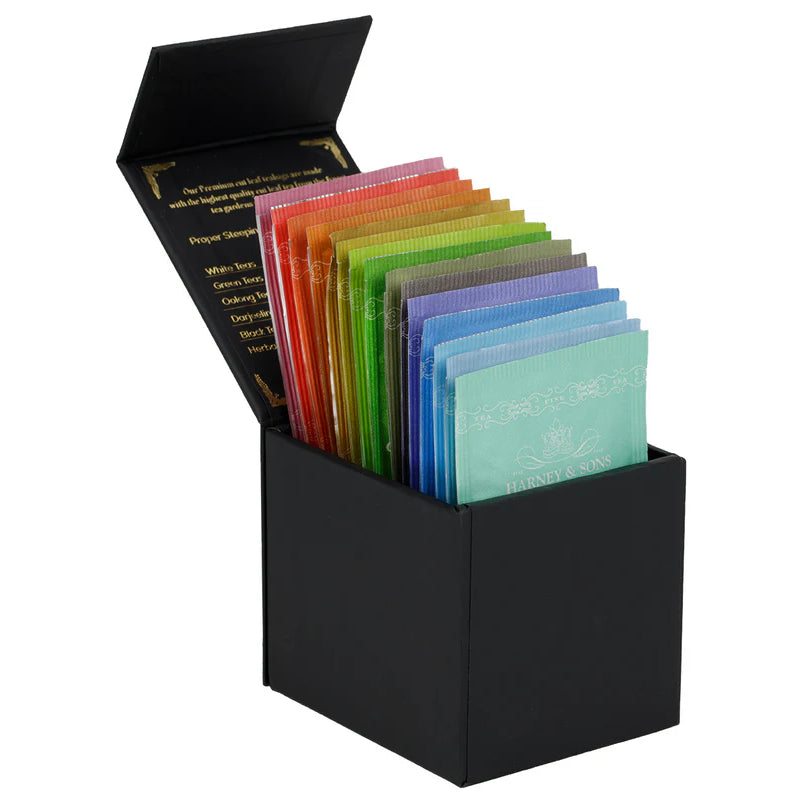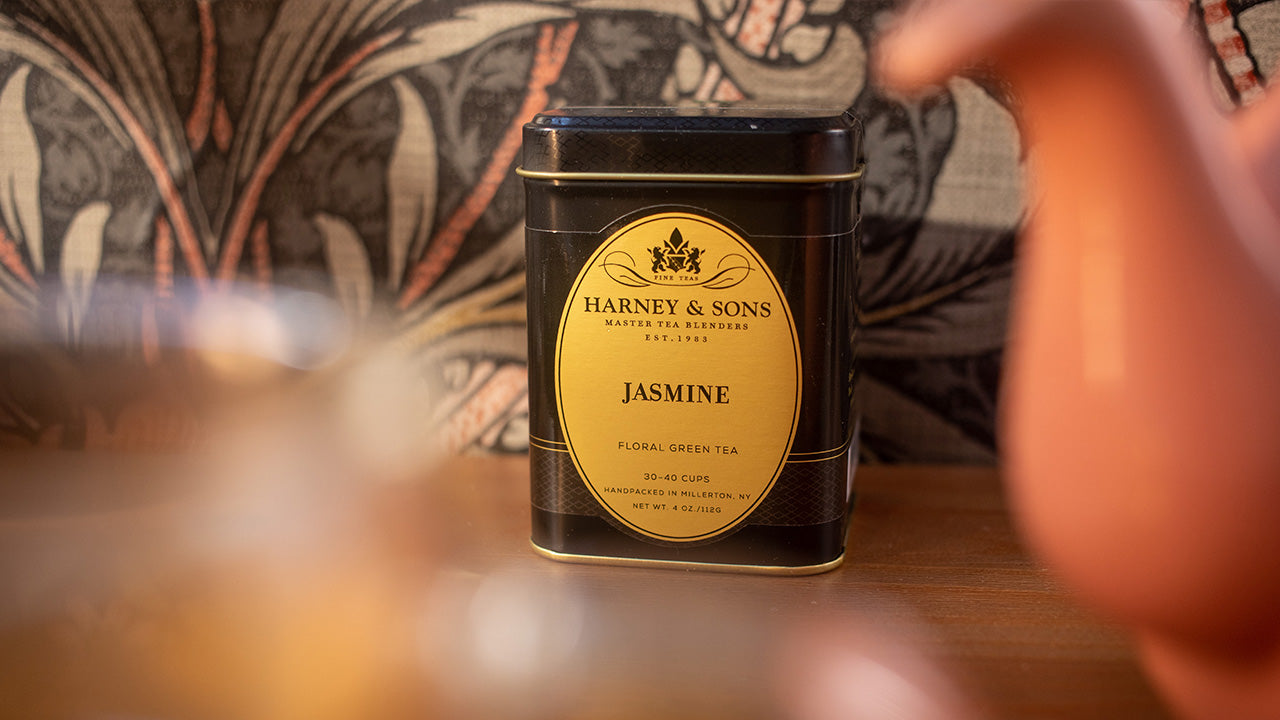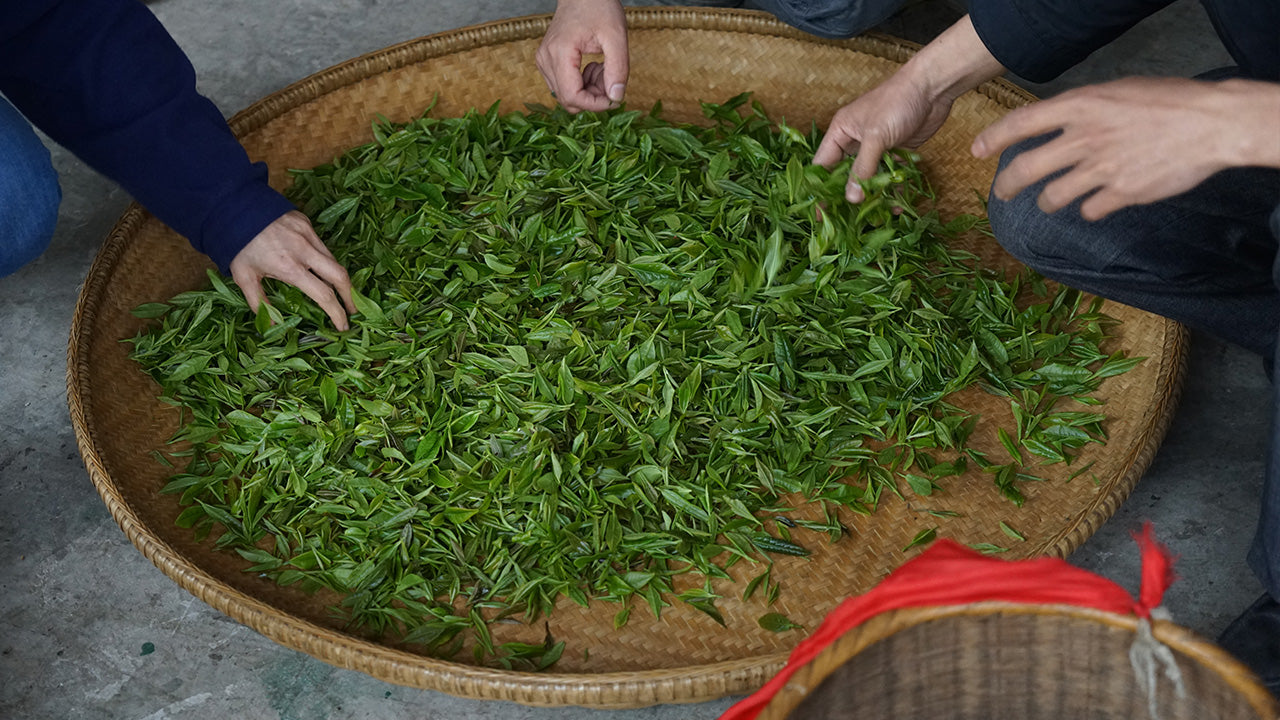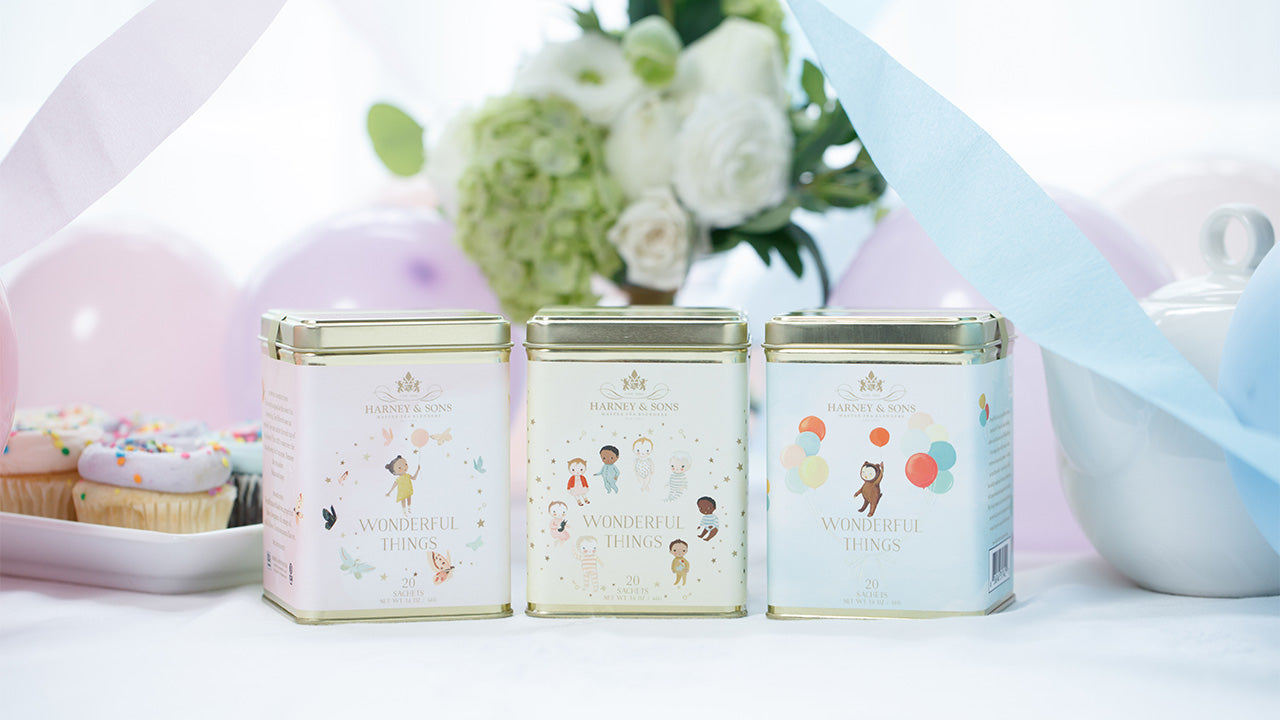We all know they’ve been drinking green tea in China for centuries, but did you know before World War II it was very popular in the U.S.? While it fell out of favor for a time, it has now grown again in popularity big time! While green teas are made from the same plant as black, white, and oolong teas, the Camellia sinensis plant, that’s where the similarities end. Let’s explore the types of green teas and discover what all the fuss over green teas is about.
How Green Teas Are Made
Green teas originate from the tea mother plant, the Camellia sinensis. Just like we discussed in our Types of Black Teas blog, it’s the processing that makes each tea unique.
In order to make green tea, the fresh tea leaves are briefly cooked using either steam or dry heat. This process fixes the green colors and fresh flavors. Which method is used, however, does affect the outcome. Not all green teas are the same.
Although green teas grow all over the world, the finest come from China and Japan. China has been producing tea for at least the last 5,000 years, while the Japanese have made tea in earnest for just the last 500 years.
The light flavors of Chinese greens emerge only after the leaves have been plucked and then fixed. When tea makers “fix” green teas, they preserve the chlorophyll by quickly heating the leaves after harvest. The heat destroys the enzyme that would otherwise turn the leaves brown. The same enzyme browns an apple or potato when the flesh is exposed to the air; just as cooking apples or potatoes preserves their white color, fixing tea keeps it green.
Chinese tea makers use a panoply of methods, each with their own flavors. Legend tells us the first tea was blanched when a fresh leaf fell by chance into a bowl of hot water. Tea makers later steamed teas – it was from the Chinese that the Japanese learned the technique in the ninth century – but then began fixing the leaves in hot woks. Today, some tea makers in China also fix teas in bamboo cylinders or ovens with blasts of hot air.
While the Chinese draw on an arsenal of methods to fix their teas – woks, wood fires, charcoal, hot air, steam, or some combination, each creating distinct flavors – the Japanese favor a steaming method. Chinese tea makers manipulate their leaves to form every shape, from snail shells to plum blossoms, and invent new forms all the time. Those Japanese tea makers who don’t follow the thousand-year tradition of milling their leaves into matcha powder follow the more recent sencha leaf-rolling method invented in 1740.

Types of Green Teas
We carefully select our green teas from the best tea leaf fields in China and Japan, as well as wonderful green teas from some other regions. The Chinese green teas are more mellow and smooth, while the Japanese green teas have the heft of rich, vegetal flavors, which comes from the preservation of chlorophyll. Whether you prefer a hot green tea, an iced green tea, a matcha, a matcha latte, or a green tea shot, green teas are good for you and delightful! Let’s take a look at a few different types of green teas.
Compared to the darker, more mouth-filling Japanese green teas, Chinese greens have the gentler vegetal flavors of steamed leeks, green beans, or bok choy. And where Japanese greens have less sugariness, Chinese greens have charming, sweet notes of cooked carrots, jasmine, and sometimes a subtle hint of honey.
- Lung Ching. Lung Chings are famous worldwide, known as some of the best Chinese green teas. Our Lung Ching is made by a respected producer two hours beyond the traditional area. The small green leaves make for a brew that has a mild and sweet, almost nut-like flavor.
- Bi Lo Chun. Bi Lo Chun is a popular tea and an ancient one enjoyed by emperors and mere mortals throughout China for several centuries. It is a light green tea that has a wonderful mixture of sweetness, vegetal flavors, and a bit of smoke.
- Organic Gunpowder. Speaking of smoke… Gunpowder has an aroma of burnt wood. It has a charred, barely vegetal flavor of heavily grilled leeks that actually tastes wonderful with mint or on its own. It most likely got its name from the shape of its leaves, so tightly rolled that they resemble the pellets soldiers once used as musket shot.

In every way Chinese green teas vary, Japanese green teas can be remarkably alike. The phrase “Japanese green teas” is actually redundant, because green is the only color of tea found in Japan.
- Japanese Sencha. Our Sencha is a very fine one from the central Shizuoka province and can be found in many homes in Tokyo. It is a pleasant and approachable green tea, a fine choice for everyday. Our founder, John Harney, always began his mornings with this cup.
- Genmaicha. Genmaicha is a creative use of Bancha tea and an eloquent unification of the two crops central to Japanese culture: tea and rice. Once considered a cheap peasant beverage, Genmaicha has recently come into vogue among Japanese urban elite and in the U.S. as a health drink. It has a unique appearance and pleasant roasted flavor.
- Hojicha. A Japanese specialty, this tea contains roasted twigs from some of the best tea gardens in Uji. Like fresh-roasted coffee in specialty food stores, Hojicha is often set out in many Japanese food stores to lure in shoppers with its delicious roasted aromas. It is reminiscent of coffee, but sweeter.

For those who prefer their green teas to have a little something something extra to delight their palate, we make flavored green teas. We start by sourcing the best type of green teas and then add flavors, flowers, and other botanicals to create beautiful and exotic green tea blends. You’re welcome.
- Organic Bangkok. The rich flavors of Bangkok, Thailand are the inspiration for this tasty blend that combines green tea, lemongrass, vanilla, coconut, and ginger. It’s so good iced that we made it in a Fresh Brew Iced Tea version as well!
- Garden Party. Created by one of our customers, Garden Party is the winner of our 2021 Endless Possibilities blending contest. The blend is inspired by summer parties in lush English gardens and features a green tea base with fruit flavors and tart rhubarb.
- Green Hot Cinnamon Spice. Good news for green tea lovers, and just for the world in general – our #1 best-selling Hot Cinnamon Spice tea, which is a black tea base, is also made with green tea! While it has a lighter body than its black-tea counterpart, it has all the orange, clove, and cinnamon spice that customers around the globe say they cannot live without.
As previously mentioned, while the vast majority of green teas come from China and Japan, green tea is produced in other countries. We carry three wonderful greens from Vietnam, South Korea and Colombia.
- Vietnamese Tra Xanh. This tea comes from north of Hanoi in Vietnam in the Thai Nguyen area, with a long tradition of making wonderful teas. It has a lovely bright lima bean color with notes of lima bean and zucchini.
- Jeju Sejak. The island of Jeju is located south of mainland South Korea and features a great volcano and National Park. Vast and beautiful fields of green tea can be found in four different gardens. This style of Korean tea is similar to a Japanese Sencha in that it is lightly shaded and steamed during processing. It has an aromatic bouquet and a smooth cup with vegetal flavors.
- Colombian Green. While most people would not think of Colombia as a tea producer, our awesome tea taster Elvira Cardenas knew of a tea company in her native country that made good tea. When Elvira says tea is good, you don’t second guess her opinion – the woman knows tea! Its sweet vegetal flavors remind one of a wonderful summer squash.

Powdered green teas have been consumed in China and Japan for centuries. It is only in the last few decades that Westerners have acquired a taste for this ancient tea. We enjoy the bracing vegetal flavors, as well as the unusual process for preparing the tea.
We offer a range of thin, thick, and extra thick matcha grades depending on your taste and purpose. We also offer an Organic Matcha, Organic Everyday Matcha, flavored matchas (White Peach and Very Berry), a delightfully different Roasted Buckwheat Matcha, and Matcha iri Genmaicha, a special tea made with Bancha leaves and brown rice coated in matcha powder. For a deeper dive into all things Matcha, visit our Matcha Tea 101 page.
You can also learn much more about green teas – like whether green tea is good for you and if green tea has caffeine (spoiler alert: yes, it does) – on our Green Tea 101 page. Brew up a cup of your favorite green tea, sit back, and become a green tea expert!
